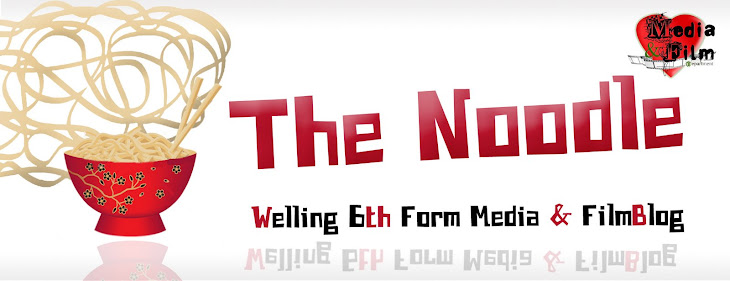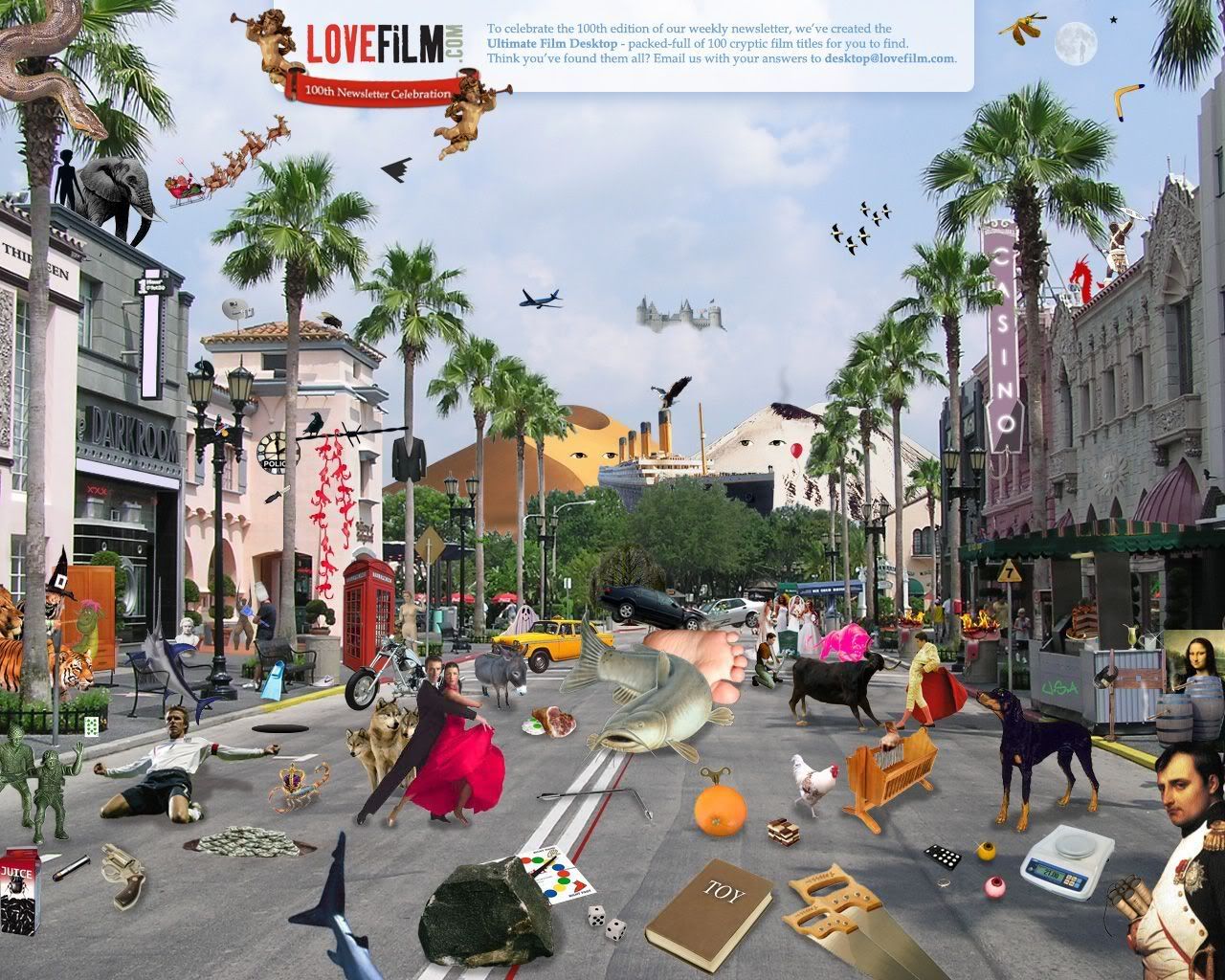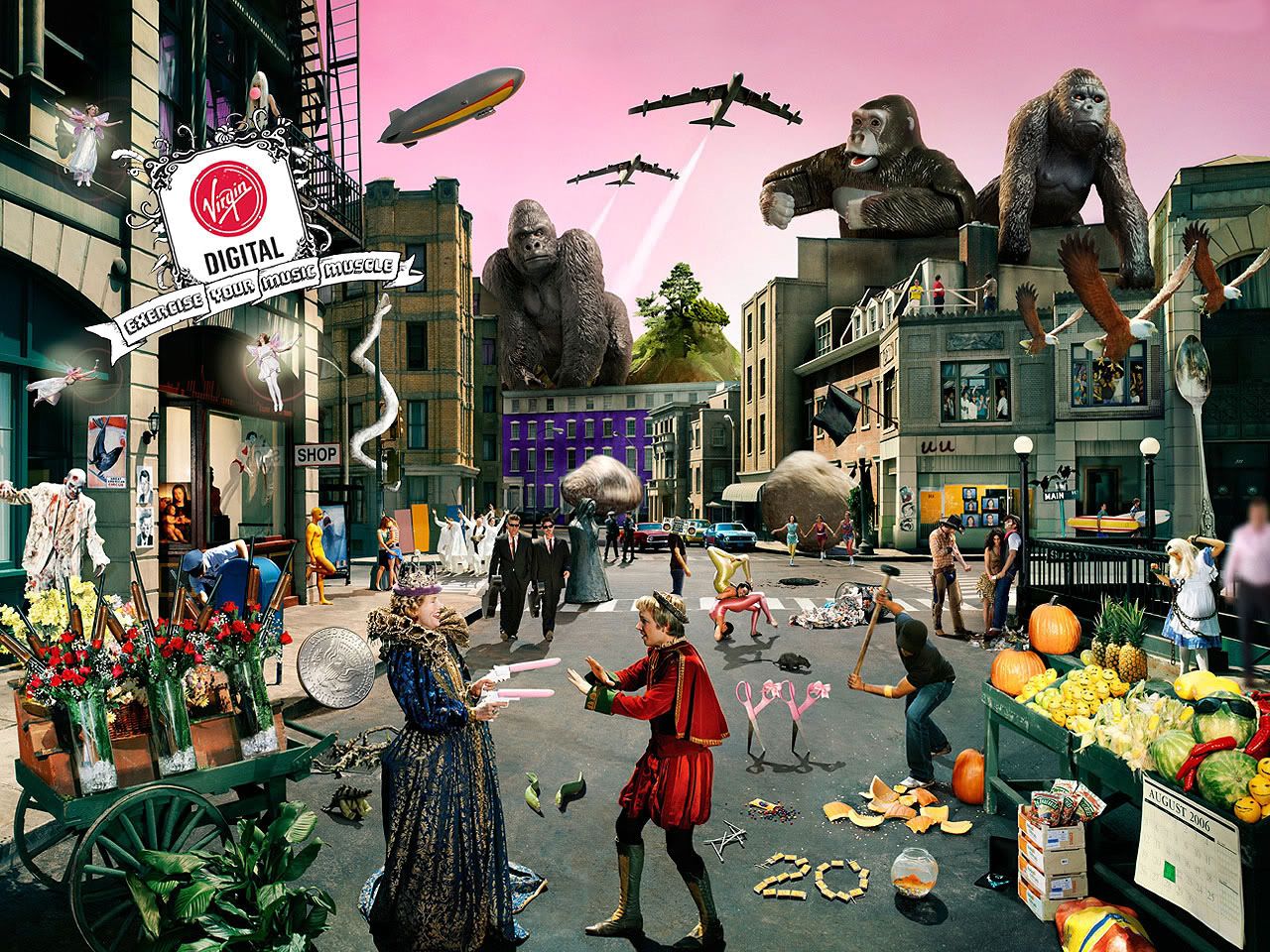 Here is a fabulous article published in the English and Media Centre 'Media Magazine 22' in December 2008. It explores Wes Craven's 'Scream' as a postmodern text and will be essential reading as we begin to deconstruct this important film in our study of film genre.
Here is a fabulous article published in the English and Media Centre 'Media Magazine 22' in December 2008. It explores Wes Craven's 'Scream' as a postmodern text and will be essential reading as we begin to deconstruct this important film in our study of film genre.
Scream, scream, scream again
And if we’re talking genres, what better way to unpick the time-old conventions of the Horror movie than revisiting the ultimate in Horror parody – the Scream trilogy. Tonia de Senna deconstructs.
During the 1990s, genre film production saw a multiplicity of remakes, sequels and adaptations. The Horror genre is no exception to the ‘rule of the remake and sequel’ during the 1990s and beyond. In his article ‘Same as It Ever Was: Innovation and Exhaustion in the Horror and Science-Fiction Films of the 1990s’, David Sanjek states that, although there seems to be an abundance of cinema screens, these offer nothing new or intellectually exciting or stimulating to the audiences.
Indeed, in the early 1990s the film industry seemed to return to classic novel adaptations and the Fantasy/Horror cycle of the 1930s, with films like Bram Stoker’s Dracula (Francis Ford Coppola, 1992) and Mary Shelley’s Frankenstein (Kenneth Branagh, 1994). By the mid-90s, we saw the release of Wes Craven’s Scream (1996), which revives the Teen Slasher Horror cycle of the 1970s and 1980s. This, at first, would seem to corroborate Sanjek’s assertion. However, the film actually refers directly, consciously and unashamedly to many classical Horror movies, such as Psycho (Alfred Hitchcock, 1960) and Halloween (John Carpenter, 1978), and invites its fans to engage actively in deconstructing key generic conventions along with the characters, who are themselves Horror film buffs. Based on an analysis of visual and narrative elements in the Scream trilogy, this article will argue that, rather than ‘intellectual understimulation’ , practices of self-referentiality, pastiche and parody (see glossary) have contributed to a redefinition of the Horror genre by offering its audiences alternative forms and levels of engagement with the texts:
inviting the moviegoer to participate in the construction of the Horror experience via modes of response which are increasingly self-aware.
Reading Scream
Scream starts with a murder sequence of a young couple about to see a ‘scary movie’. Casey Becker (Drew Barrymore) is home alone, making popcorn and waiting for her boyfriend to arrive. An establishing shot informs us of the isolated location of the house, a stereotypical locale of Horror films, allowing for the unsuspecting and helpless victim to be terrorised by the killer without any witnesses. The means of terror is the phone, a prop that plays a key role throughout the film – and indeed in many Horror movies, as we are later informed by Randy (Jamie Kennedy), the Horror film enthusiast. The conversation between Casey and her murderer ironically focuses on (Slasher) Horror films featuring psychopath killers. Among others, we are reminded of Halloween and its killer, Michael, characteristically identified by his white mask. Soon enough, the killer in Scream appears, wearing a white mask and holding a rather sharp knife, which he motions in a very familiar Psycho fashion. Casey is stabbed several times and hung from a tree in the garden. The sequence finishes with Casey discovered by her mother, whose terrifying screams remind us once again of Jamie Lee Curtis’s memorable screams in Halloween. Apart from the thrill of the chase of the victim by the killer and our fear for her, the audience are, from the beginning of the film, encouraged to embark on a Horror-conventions-and-allusions-recognition game.
Establishing the survival rates
Throughout the film, many other direct visual and narrative references are made to Halloween, a seminal Slasher-Horror film – and by extension to other films of the cycle. Scream does not, however, just recreate or repeat those as a nostalgic or reverential statement; nor is it just another film following an established and tired formula; it self-consciously draws our attention to its own elements of pastiche through the dialogue and the mise-en-scène. For example, when Randy tries to explain to the other teenagers in the house – who are effectively an audience, like us – how to survive a Horror movie, he is in fact becoming a vehicle for the conventions he draws attention to. At this point, we know they have to survive metaphorically not only the killer in the film they are watching (not, coincidentally, Halloween), but ironically and literally, the killer in their house, who we have seen, but they have not. Randy recites the following ‘rules of survival’:
i. You never answer the phone – the detrimental effects of which we have already seen in the first sequence, described above, and we expect to see again bearing upon Sidney (Neve Campbell).
ii. You do not have sex – at this point we have a cut, taking us to the bedroom where Sidney and Billy (Skeet Ulrich) are having sex, conventionally a warning of impending death.
iii. You don’t leave the room saying ‘I’ll be right back’, ‘cause you’re never coming back – this is when Stu (Matthew Lillard) leaves the room and mockingly says he’ll be right back. This makes the other characters (and us) laugh, whilst our expectations are teased about whether he is actually coming back or whether he is the next victim.
In the first instance, the phone ultimately becomes a tool in the heroine’s hands, which exasperates the killers, who are incapacitated by their own means of intimidation. Secondly, not only does Sidney not die, but she gets to act out the role of the Final Girl to the end, even if not a virgin any longer. Randy, a male character, on the other hand, is the one who now appropriates the convention as he happily identifies his virginity as the reason for being alive. Finally, our expectations of the friend’s conventional death are subverted as Stu does indeed return, but as one of the psychopathic killers. Each of the rules, then, is established – only to be revised by later action in the film.
The conventions of the sequel
While Scream re-articulates key Horror film conventions, Scream 2 (1997), the sequel, does the same about Horror film sequels. The film-within-a-film referential structure is used again to provide the backdrop of the generic conventions explored, occasionally mocked out-right and redefined. The film that the characters watch and talk about while more gruesome murders take place is ‘Stab’, a film inspired by Gale Weathers’s (Courtney Cox) book Woodsboro Murders; in other words our Scream! In the opening sequence of Scream 2 we find ourselves at the cinema, watching, along with the predominantly teenage audience in the film, the opening sequence of ‘Stab’, which we know to be a recreation of the opening sequence of Scream. During the screening, a young couple is murdered: this recycling of conventions becomes an acute criticism of modern-day media – and more specifically Hollywood – practices, such as capitalising on repetition of formula, sensationalist violence and its influence on (young) audiences, and ‘sequelling’ or the ‘McDonaldisation’ of Horror; but at the same time we are still watching one of these products, i.e. the sequel. It appears that the film parodies its own essence, providing a sort of commentary on Hollywood production while reiterating its methods.
Indeed, as in Scream and then in ‘Stab’, we see another murder of an innocent blonde girl at home alone. Once again, we see her terrorised over the phone and driven away from the front door (a logical route or escape) and up the staircase where she hits a ‘dead-end’ and eventually gets killed. Although Scream had drawn our attention to this convention only to subvert it with Sidney, here it is re-enacted reverentially (the familiar staircase, the chase and the locked doors, the creepy sounds that enhance our sense of fear), reminding us that we are watching a Horror film. It is precisely this return to the generic convention that bewilders the audience; having seen Sidney escape her ‘genre-predicted’ fate in Scream, we are now unsure what to expect from the film. The thrill in Scream 2 comes not from the expected codes of Horror, nor from the direct subversion of those (as in Scream), but in the unreliability of the narrative. We never know if the convention is going to be followed or not.
One more time, the character who ‘guides’ us through the rules of the sequel is Randy; he prepares us for a ‘bigger body-count’, similarities in the killer’s practices, but also for a surprise: no-one would be interested in a sequel if it was exactly the same as the first film. In other words, Randy’s comments here reflect the position of many theorists, who suggest that ‘genres work on the terrain of repetition and difference’. Scream 2, in a playful manner, draws our attention not only to genre cinema, but also the genre theory that has developed around it, placing us at the heart of academic debates about film: a class in a Film School of an American university. The setting, in other words, is very carefully constructed for film-theory-aware and literate characters and audiences.
The final chapter
Similarly, Scream 3 (2000), the final part in a trilogy, refers back to the first film, thus bearing visual allusions to itself and the influential Halloween. The film once again starts with a double murder, which again takes place in the home. Cotton Weary (Live Schreiber) – who had been wrongly accused of the murder of Sidney’s mother in Scream – gets a phone call from the killer, who informs him that he is in Cotton’s house watching his (Cotton’s) girlfriend having a shower – all too familiar conventions. The sustained use of a subjective camera from the point of view of ‘the monster’ signifies the murderer’s approach and implicates the audience in the violence that follows. A medium, point-of-view shot of Christine’s Psycho-style silhouette behind the shower screen prepares us for the imminent attack...which does not happen. Instead, we cut back to Cotton still on the phone with the killer, and then back to the house, where we see Christine (medium-shot) coming out of the shower intact. Cue sense of relief and wry smile at the playful revision of arguably one of the most powerful scenes in the history of cinema. And then... a low level shot of Christine’s bare feet on her way to investigate a noise, and the stereotypical and much expected chase by the killer down the corridor. By the end of the rather lengthy opening sequence, both Cotton and Christine are stabbed to death in the same way as all the other victims in the Scream series.
Randy, our Horror film guru, has died in the previous instalment; along with the characters, we now no longer know where we stand in terms of the ‘rules of the game’. However, Randy does return to enlighten us through the use of a very significant prop: the TV. Randy has recorded a message for his friends, all too knowingly suggesting that the events could lead up to a trilogy. He informs us that previous rules, sequel rules, do not apply; and among other things, the past returns with a hidden secret, which holds the key to the motive behind these murders. Once more, the film self-consciously sets out the rules only to challenge them and reinvent them as the narrative unfolds.
Sure enough, ‘Stab 3’ is in production; the self-reflexive film-within-a-film formula is in use here, too. ‘Stab 3’ recreates through pastiche the house on the hill where the horrible Woodsboro murders occurred in Scream; at the same time, it is itself the last part of a trilogy. Despite pushing the boundaries of self-consciousness to the extreme, Scream 3 manages successfully to walk the fine line’it sets between parody (of itself) and serious Horror action. From a certain point onwards we see everything double as the suspenseful narrative unfolding in the ‘real’ world of Scream 3 is uncannily reproduced on the set of ‘Stab 3’. Self-referential humour combined with gruesome violence, as a Horror genre feature that is maintained throughout, reinvigorate the sub-genre by engaging the audience in a more complicated than expected storyline for a Horror movie. In Scream 2 Randy did emphasise that in Horror films ‘you gotta keep things simple; you don’t want to confuse your target audience’!
...and the final resolution?
In order to make sense of the trilogy as a whole, what remains to be found out is who the killer/s are in this final part. It turns out that Sidney’s ‘abandoned’ and unwanted half-brother Roman (Scott Foley) had been orchestrating the murders from the very beginning because of a grudge against their mother and, by extension, against his half-sister, who ended up being the ‘protagonist’ in what should be his triumphant story. Therefore, the revelation of Roman is the vehicle for the ultimate parody: his invention in the final episode of the trilogy redefines the trilogy itself, making us re-construe the story of the previous two films.
The allusions of the wanting and traumatising relationship between mother and son are carried throughout the series, replaying and reinventing a theme introduced in Hitchcock’s Psycho. Perhaps not coincidentally, the name of the arch-villain, Roman Bridges is a quasi-anagram of Norman Bates...
The last words
Not all Horror films of the 1990s have been as self-conscious as the Scream series. Neither have they as directly and openly offered:
pleasures of their own, with their own particular rules and conventions about the exploration of the rules and conventions of the broader slasher (sub) genre.
However, I believe that the Scream films are a useful and clear example of re-framing pre-existing codes, pastiche, self-consciousness and parodic humour, practices that led to the redefinition of the Horror genre, its boundaries, its function and its engagement with audiences. Each film in the trilogy pushes these elements further. Consequently, Scream and its subsequent sequels became generic blueprints themselves as they generated a particular type of Horror film – namely one that is both scary and humorously self-referential.
Rather than over-burdening the Horror genre, or the genre film production of the 1990s, postmodern practices of self-referentiality, parody and pastiche have instead enabled generic rules have been revised and reaffirmed.
Glossary of key terms
Final Girl: Stereotypically, the virginal girl that survives in Horror films. In her very influential text Men, Women and Chainsaws: Gender in the Modern Horror Film (1992) Carol Clover defines the Final Girl as a ‘phallic’ heroine, who is only acting as a male protagonist would, thus both undermining her feminine address, and her (often literal) role as ‘castrator’; however, this view has been questioned as these female heroines often distinguish themselves by rejecting the established codes of masculine behaviour and by enhancing their credentials as modern post-feminist women. On this you can further consult Paul Wells, The Horror Genre: from Beelzebub to Blair Witch (2000).
Intertextuality: The way in which (media) texts refer to and interact with other texts, assuming that audiences will recognise those allusions.
Parody: Mocking in a critical way, according to postmodernist critic Fredric Jameson.
Post-feminism: A position that suggests that women should take respect and equality for granted after the successes of the 1960s and 1970s feminist struggles, and should enjoy the ironic and playful pleasures associated with traditional ‘femininity’.
Postmodernism: The social, political and cultural attitudes of production and consumption of (media) products in the late 20th and early 21st centuries. The term carries several meanings but is usually associated with the self-reflexivity of contemporary culture and media (see page 6).
Self-reflexive: Texts which display an awareness of their own artificial status as texts.
Self-referential: A text that makes a reference back to itself, usually in a self-ironising and playful manner.
Pastiche: Texts which are made up from different sources, favouring practices of copying or simulation and rejecting authenticity. The term is often used negatively for texts that do not display originality; an approach that has, however, been revised by many theorists.
Tonia de Senna is a Lecturer in Media and Multimedia at Amersham College, Buckinghamshire.
from MediaMagazine 22, December 2008.















